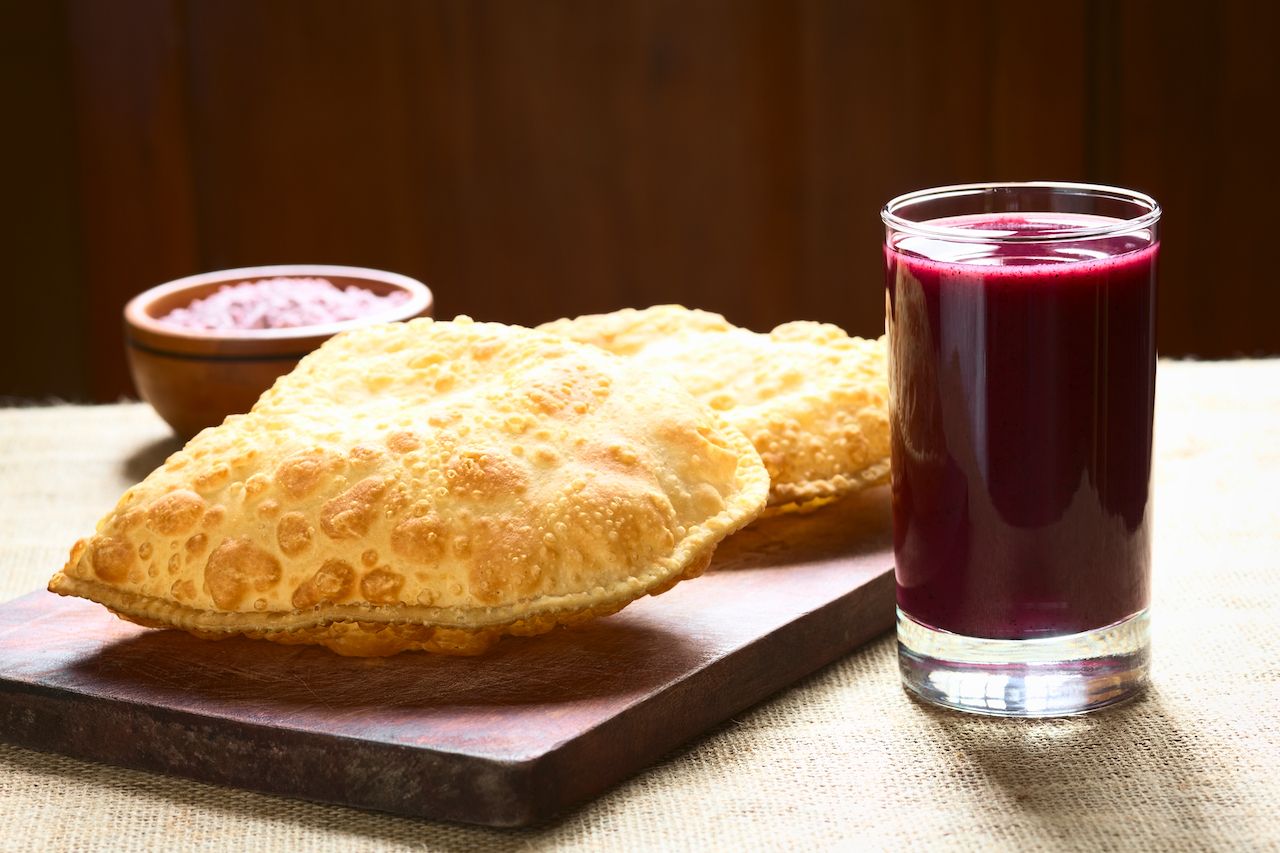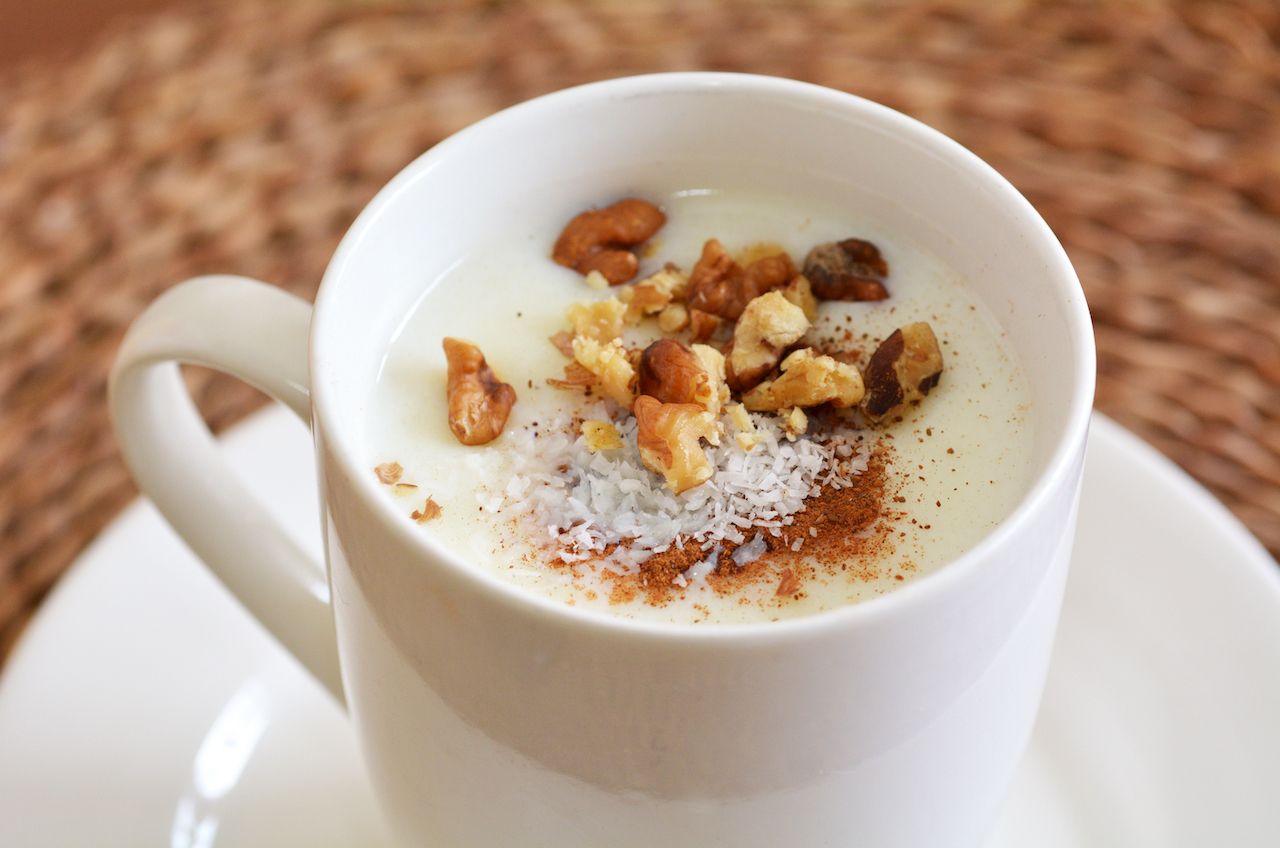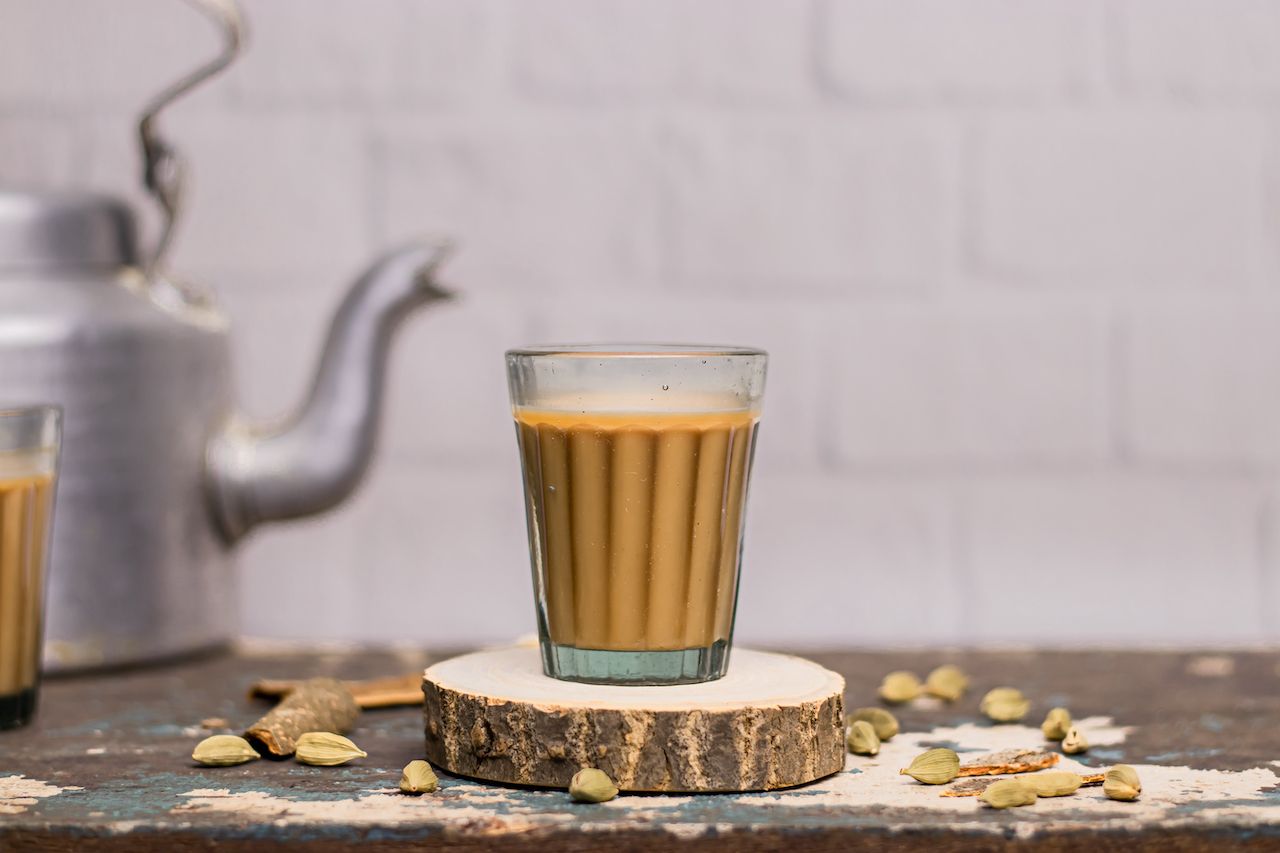Api Morado or Blanco: Bolivia

Photo: Ildi Papp/Shutterstock
Who knew that purple corn, pineapple, cinnamon, cloves and orange rind could come together to make a thick, hot drink that’s practically a meal unto itself? Well, they figured it out in Bolivia with api morado: a drink that can be traced back to the Incans.
It is served for breakfast, usually with a pastry. Or there is api blanco, which features white corn, milk, sugar and cinnamon. Served at bus stations in the mornings in central and western Bolivia, it is the ideal warm greeting when you arrive in the cool of the Andes.
(It is also known as chicha morada in other parts of South America and sometimes served cold.)


